“I hope I shall be able to confide in you completely, as I have never been able to do in anyone before, and I hope that you will be a great support and comfort to me.”
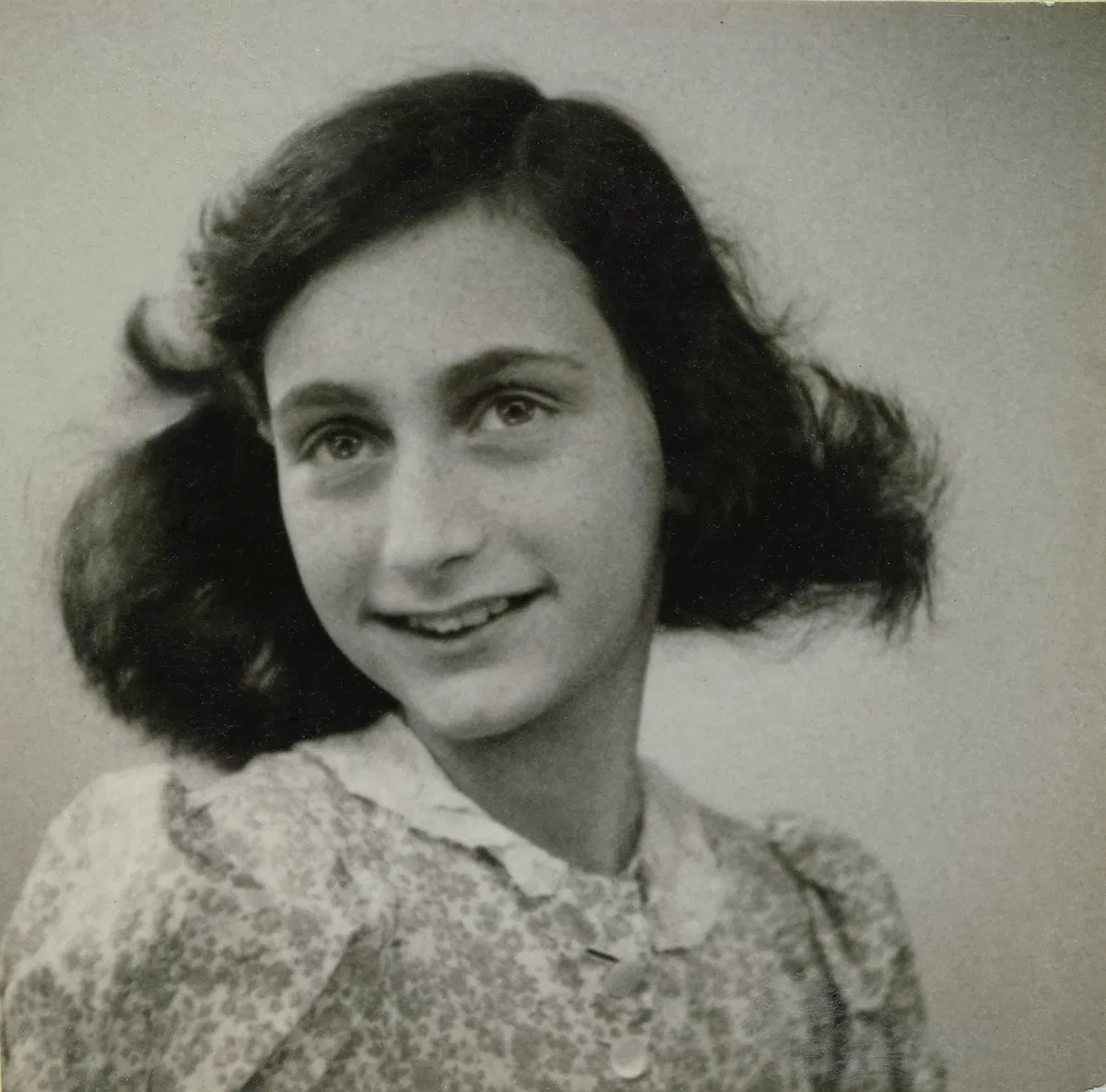
The last known photograph of Anne taken in May 1942, taken for a passport photo.
Her voice has come to symbolise the Holocaust, one victim among the six million who spoke for them all, a testament to all who perished with her.
Anne Frank died aged 15 in the Bergen-Belsen concentration camp in early March 1945, possibly the 7th.
Born on 12 June 1929, Anne and her elder sister, Margot, lived their early years in Frankfurt. But in 1933, following Hitler’s appointment as Chancellor, the Franks, as a Jewish family, became concerned for their safety as the Nazis introduced increasingly fanatical anti-Semitic legislation.
The Franks Move to Amsterdam
In late 1933 Anne’s father, Otto, was offered and accepted a business opportunity in Amsterdam. In February 1934 his wife and daughters joined him in the Netherlands. Of the half-million Jews living in Germany in 1933, about 320,000 had emigrated by 1939.
In May 1940 Hitler launched his attack against France and the Low Countries. Rotterdam was heavily bombed and, on 15 May, the Dutch, fearing further losses, surrendered.
Occupied Netherlands
Life for the Jewish population in Nazi-occupied Netherlands became increasingly intolerable and dangerous. In July 1942 Otto Frank received an order to report his eldest daughter for a work camp. The Franks, fearing for their lives, decided they had no option but to go into hiding. Continue reading
 “Alone, deserted by his followers, broke and unpopular, Marcus Garvey, once leader of the greatest mass organization ever assembled by a member of the Race, died here during the last week in April.”
“Alone, deserted by his followers, broke and unpopular, Marcus Garvey, once leader of the greatest mass organization ever assembled by a member of the Race, died here during the last week in April.”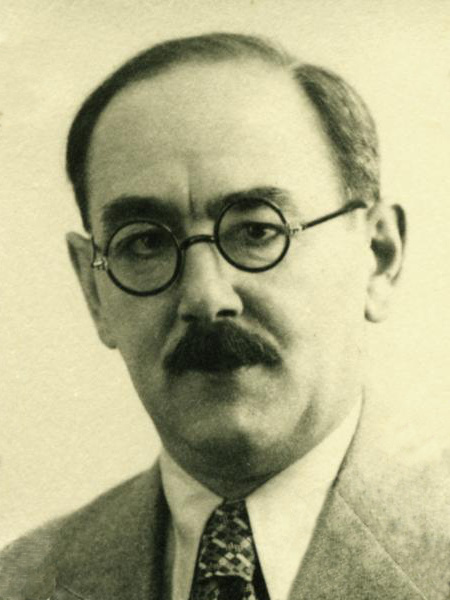 Imre Nagy was born 7 June 1896 in the town of Kaposvár in southern Hungary. He worked as a locksmith before joining the Austrian-Hungary army during the First World War. In 1915, he was captured and spent much of the war as a prisoner of war in Russia. He escaped and having converted to communism, joined the Red Army and fought alongside the Bolsheviks during the Russian Revolution of 1917.
Imre Nagy was born 7 June 1896 in the town of Kaposvár in southern Hungary. He worked as a locksmith before joining the Austrian-Hungary army during the First World War. In 1915, he was captured and spent much of the war as a prisoner of war in Russia. He escaped and having converted to communism, joined the Red Army and fought alongside the Bolsheviks during the Russian Revolution of 1917. The Americans, it was decided, would land on the two western beaches in Normandy,
The Americans, it was decided, would land on the two western beaches in Normandy,  Born 24 June 1850 in County Kerry, Ireland, Horatio Kitchener first saw active service with the French army during the Franco-Prussian War of 1870-71 and, a decade later, with the British Army during the occupation of Egypt. He was part of the force that tried, unsuccessfully, to relieve General Charles Gordon, besieged in Khartoum in 1885. The death of Gordon, at the hands of Mahdist forces, caused great anguish in Britain. Thirteen years later, as commander-in-chief of the Egyptian army, Kitchener led the campaign of reprisal into Sudan, defeating the Mahdists at the Battle of Omdurman and reoccupying Khartoum in 1898. Kitchener had restored Britain’s pride.
Born 24 June 1850 in County Kerry, Ireland, Horatio Kitchener first saw active service with the French army during the Franco-Prussian War of 1870-71 and, a decade later, with the British Army during the occupation of Egypt. He was part of the force that tried, unsuccessfully, to relieve General Charles Gordon, besieged in Khartoum in 1885. The death of Gordon, at the hands of Mahdist forces, caused great anguish in Britain. Thirteen years later, as commander-in-chief of the Egyptian army, Kitchener led the campaign of reprisal into Sudan, defeating the Mahdists at the Battle of Omdurman and reoccupying Khartoum in 1898. Kitchener had restored Britain’s pride. In 1928, Hitler offered his sister the position of housekeeper in his Bavarian mountain retreat. Angela arrived with her two daughters, Elfriede and nineteen-year-old Angela, known as
In 1928, Hitler offered his sister the position of housekeeper in his Bavarian mountain retreat. Angela arrived with her two daughters, Elfriede and nineteen-year-old Angela, known as  On 24 May 1941, the Bismarck, on its first operation, had helped sink the
On 24 May 1941, the Bismarck, on its first operation, had helped sink the 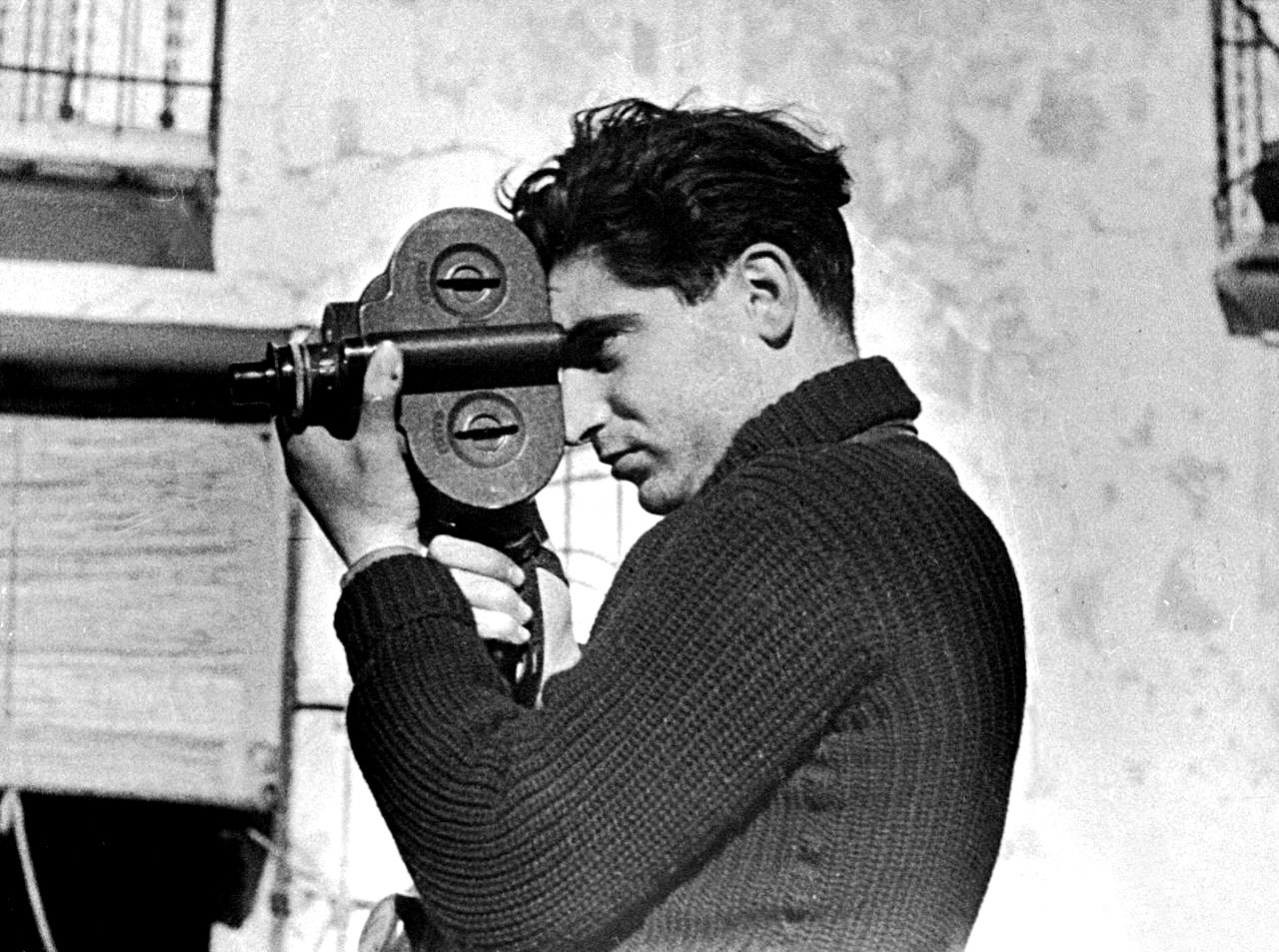 Born Andre Friedmann in Budapest on 22 October 1913, Robert Capa had, by the age of eighteen, turned into a political radical, opposed to the authoritarian rule of Hungarian regent, Miklós Horthy. In 1931, Friedmann was arrested and imprisoned by Hungary’s secret police. On his release, after only a few months, he moved to
Born Andre Friedmann in Budapest on 22 October 1913, Robert Capa had, by the age of eighteen, turned into a political radical, opposed to the authoritarian rule of Hungarian regent, Miklós Horthy. In 1931, Friedmann was arrested and imprisoned by Hungary’s secret police. On his release, after only a few months, he moved to 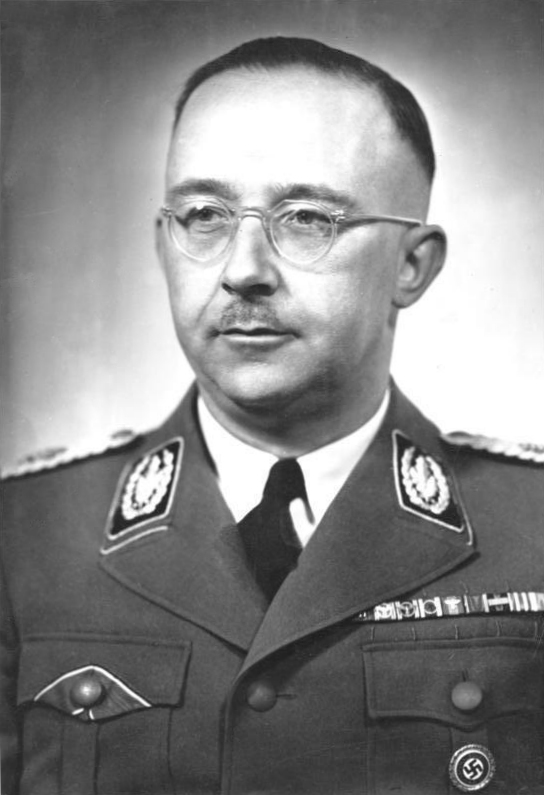 Heinrich Himmler was born the son of a Catholic
Heinrich Himmler was born the son of a Catholic 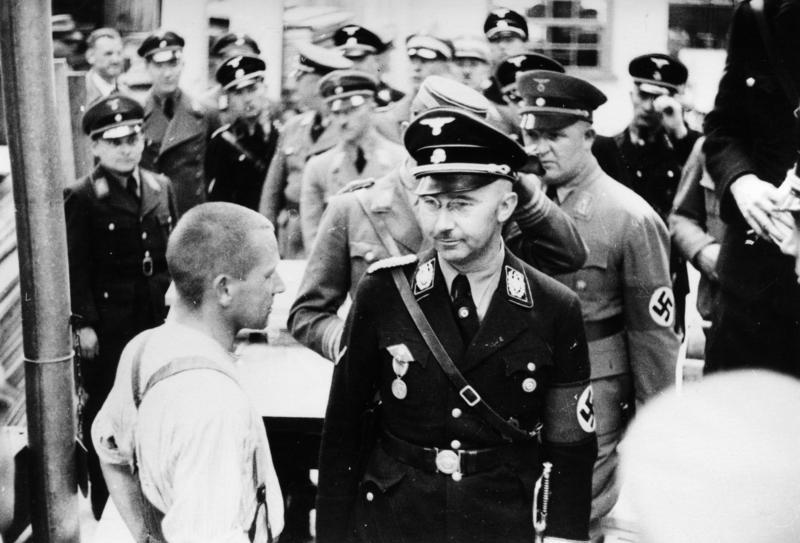 Himmler suffered from various psychosomatic illnesses and intense headaches and was shocked and sickened by what he saw when visiting the camps he administered. Yet he remained determined that the work should continue, however distasteful.
Himmler suffered from various psychosomatic illnesses and intense headaches and was shocked and sickened by what he saw when visiting the camps he administered. Yet he remained determined that the work should continue, however distasteful.